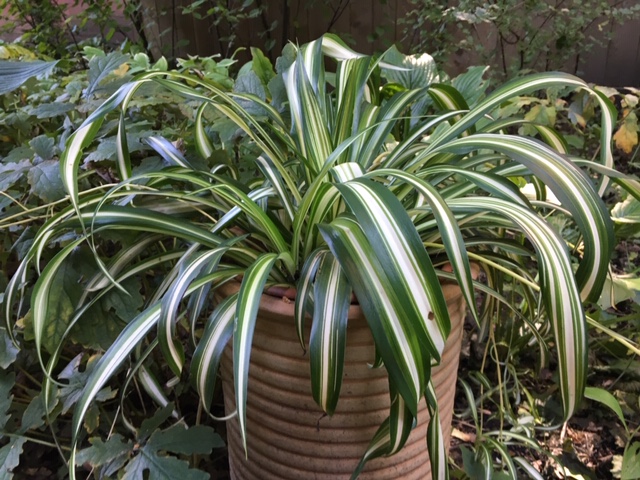
There’s an Instagram-fueled boom in houseplants today, which means I’ve come back into fashion for a while. This tends to happen to me every few decades if I just keep doing what I’ve always done.
I come from gardening people, who tend also to be houseplant people. Even in the middle of winter, we’ve always needed to be surrounded by something green and alive, something that grows and changes. We like to have something to tend, although nothing too demanding: no rare orchids or large collections of African violets.
My houseplants are as common as dirt. They’re all long-lived, easy-care, able to survive in the dim light of a Midwestern living room in January and go outside into a shady yard in May.
One quality they share is that they’re all easy to divide or propagate from cuttings. That means these species can be produced in vast numbers for sale in garden centers and big-box stores, but it also makes them easy to pass along from hand to hand. And because so many of my houseplants come from the houseplant people in my life, they fill my home with memories and stories as well as greenery. That’s one reason they have remained my companions for so long.
That variegated spider plant, a jaunty Cousin It cluster of arching white-striped leaves, came from my late mother. Originally, she got it from an old friend, the boss who had hired her for her first paying job as an environmental activist and who kept it in his office. He’s been gone for 40 years, but the plant always made my mom think of him, and now it makes me think of her. Over the years, I’ve rooted dozens of its offsets and given them away. Maybe they make someone think of me.
Then there’s the Begonia ‘Erythrophylla’, with its round glossy green leaves, burgundy underneath. My late stepmother gave me a cutting 20-some years ago from the 2-foot-wide specimen that was a fixture in her elegant living room. The species is nothing remarkable; no doubt I could easily buy another. But it would break my heart to lose this particular plant, so every spring, when I bring the houseplants outdoors, I root a couple of cuttings just for insurance.
A college-era roommate gave me the Tradescantia zebrina. A friend who died of HIV years ago left me the asparagus fern. The purple heart vine came from a cutting snipped from a plant that trailed through another friend’s kitchen. These ordinary plants are as precious as old valentines.
I’ve left the plants outdoors through a warm fall, but now it’s time to hustle them under cover as nighttime temperatures drop into the 50s. As I do, I’ll divide a few and take cuttings.

Cuttings from many houseplants will root easily in moist potting mix in a bright window or greenhouse. Make sure the container has a hole for drainage. The cutting should include the end of a stem and be about 6 inches long. Strip off all but three or four leaves at the end, and make a fresh cut just below a leaf node (the place where a leaf is attached; usually there’s a little bump or line in the stem). Insert the stem in the potting mix so two or three leaf nodes are buried.
Heated indoor air can be dry, and it’s important not to let the cuttings dry out. To hold in some moisture, cover the pots loosely with a plastic bag, but don’t seal it. Air needs to be able to circulate freely around the foliage. To keep the plastic away from the leaves, prop the bag up on pencils or bamboo skewers inserted in the potting mix.
Keep the soil moist, but not sopping wet. In a few weeks, give each cutting a gentle tug. If it resists, it’s grown roots. Transplant it to a somewhat larger pot with good potting mix.
Cuttings of many common houseplants, such as coleus, purple heart vine and pothos, will root if you simply place the cuttings in a jar of water in indirect light. When you see a fluff of roots, pot them up.
This is so easy it can become addictive and you can find yourself with too many plants. So pass them along, with memories.










